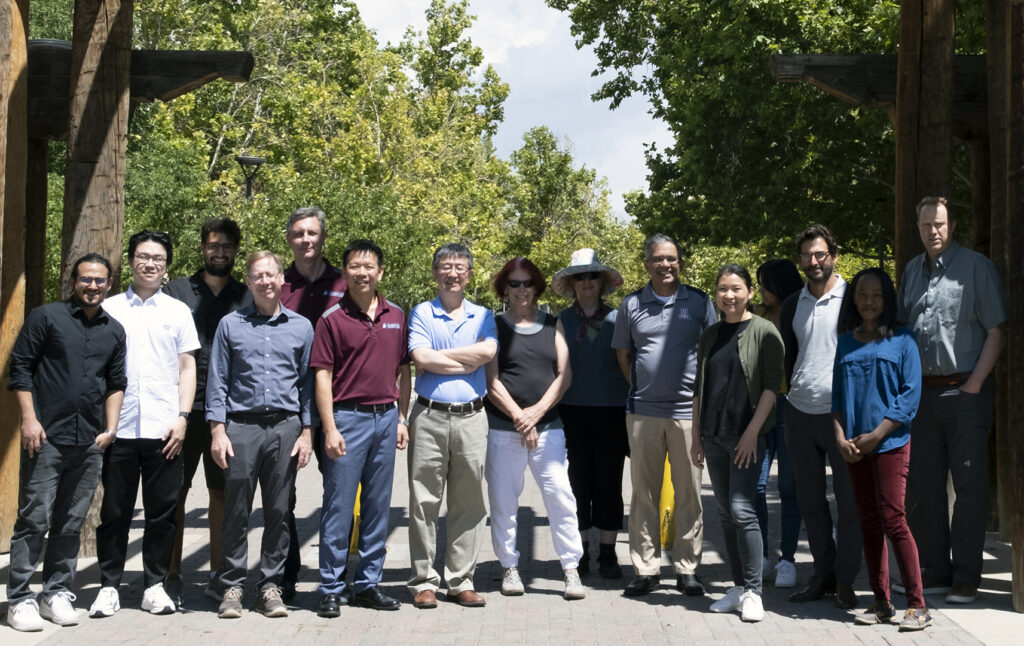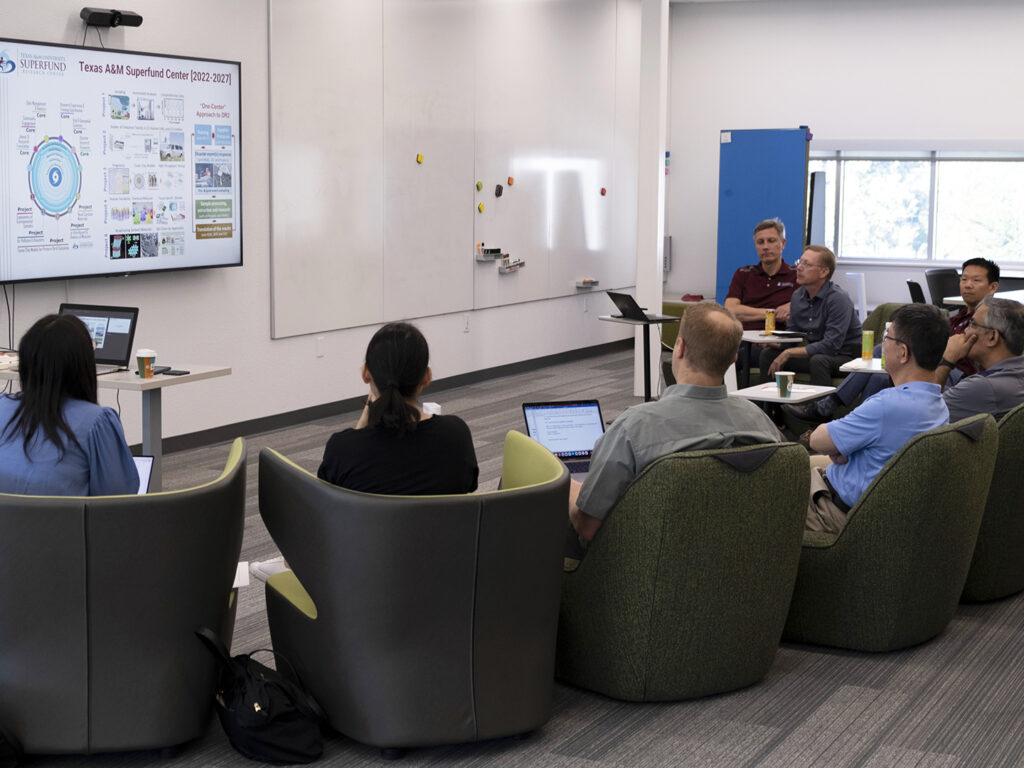Southwest Regional Superfund Summit Aims To Strengthen Data Science Collaborations, Training

Photo by Theodros Woldeyohannes, University of New Mexico
Three Superfund Research Centers funded by the National Institute of Environmental Health Sciences (NIEHS) recently came together to share their accomplishments and challenges in fulfilling the data management and analysis mandate of the NIEHS Superfund Program.
Scientists from Texas A&M University, the University of New Mexico, and the University of Arizona met in Albuquerque for a day-long summit to kick off a regional collaboration of Data Management and Analysis Cores (DMACs). This partnership will identify opportunities to enhance data science, research translation, training, and community engagement, while simultaneously creating efficiencies in how the centers accomplish their goals in a challenging funding environment.
The Texas A&M University Superfund Center DMAC has implemented a rigorous system for quality assurance of research resources, data, and results. In addition, the core offers a number of unique high-dimensional analysis approaches that allow for exploration of the linkages between environmental exposure and adverse health effects data on both individual chemicals and mixtures.
“Our center’s focus on disaster research response creates a number of challenges with data management and analysis,” said Dr. Ivan Rusyn, center director and University Professor at the Texas A&M School of Veterinary Medicine & Biomedical Sciences. “The analytical solutions, focus on rigorous quality assurance, and training are not only contributing to the success of our own projects, but also benefiting the larger environmental science community and our community and government partners.”
The University of New Mexico Superfund Center DMAC, which hosted the summit, has unique expertise in managing and analyzing the data from a number of projects aimed at addressing environmental concerns of Native American communities. Strengths include enabling data-intensive projects with highly sensitive and privacy-protected environmental and population cohort data, as well as using geospatial approaches to report-back the results to the partner communities and the regulatory agencies to facilitate reduction in the burden of environmental pollution and ultimately improve the health of humans, animals, and the environment.

Photo by Theodros Woldeyohannes, University of New Mexico
“The complexity of risks faced by our Native community partners has led us to develop novel approaches for analysis of mixtures that include psychosocial, dietary, and physiological risks that combine with contaminant mixture exposures,” said Dr. Johnnye Lewis, center director and research professor in the UNM College of Pharmacy. “We work within potentially conflicting needs of data security and privacy conferred by tribal data sovereignty juxtaposed with NIH needs of FAIR datasets that allow for combined analyses of data collected from many investigators. Models and methods developed to meet those needs can apply to many other communities where environmental injustices and disparities combine to create similar needs.”
The University of Arizona (UA) Superfund Center DMAC is a national leader in creating open science tools for “big data.” The UA houses CyVerse, an open data platform with more than a hundred thousand users across the United States and beyond that provides scientists with data storage, bioinformatics tools, data visualization, interactive analyses, cloud services, APIs, and more.
“Our Center leverages CyVerse to manage and analyze data from research projects that focus on exposures, health impacts, and mitigation of hazardous dusts in drylands,” said Dr. Xinxin Ding, center director, professor, and department head at the UA College of Pharmacy. “CyVerse supports the management and integration of data assets across our center, including establishing, coordinating, and monitoring processes for data management and analysis and identifying opportunities for integrating project/core-generated data with other existing datasets. Our DMAC team, including Nirav Merchant, CyVerse principle investigator and director of the UA Data Science Institute, is eager to introduce CyVerse to our regional partners and the rest of the Superfund Program.”
While each center has unique strengths in data management and analysis, the summit identified a number of areas where the centers can work together to leverage their strengths and promote rigorous, open, and collaborative environmental health science.
“Many of our graduate students and postdoctoral fellows could benefit from the combined expertise and tools the three programs have to offer,” said Dr. Matthew Campen at the University of New Mexico. “The diversity of research focus and applied data science approaches can create a more complete experience for our trainees.”
The centers agreed to create a Southwest Superfund Consortium in Data Science, a mutually beneficial partnership where each center’s DMAC agreed to establish communities of practice in data management/data science that deliver cross-center training, provide expert consultations, and share approaches and tools. Short- to medium-term priorities for the consortium will be in the areas of data privacy and security; quality assurance; geospatial data visualization and modeling; expanding the utilization of CyVerse in the environmental science and engineering projects; and training in open data science tools.
While ambitious, the consortium anticipates that these activities will not only create cross-center collaborations and efficiencies, but also ultimately result in enhanced solutions to environmental health issues that are plaguing a number of Native and environmental justice communities across the Southwestern U.S.
“While there are of course differences across centers, such as the more rural focus of UA and UNM compared to the more urban focus of Texas A&M, we believe the cross-fertilization of data science approaches across our centers will create synergies that ‘lift all boats’ in addressing the critical environmental health issues facing these communities,” said Dr. Weihsueh Chiu, the Texas A&M center’s deputy director.
###
For more information about the Texas A&M College of Veterinary Medicine & Biomedical Sciences, please visit our website at vetmed.tamu.edu or join us on Facebook, Instagram, and Twitter.
Contact Information: Jennifer Gauntt, Director of VMBS Communications, Texas A&M College of Veterinary Medicine & Biomedical Sciences, jgauntt@cvm.tamu.edu, 979-862-4216


